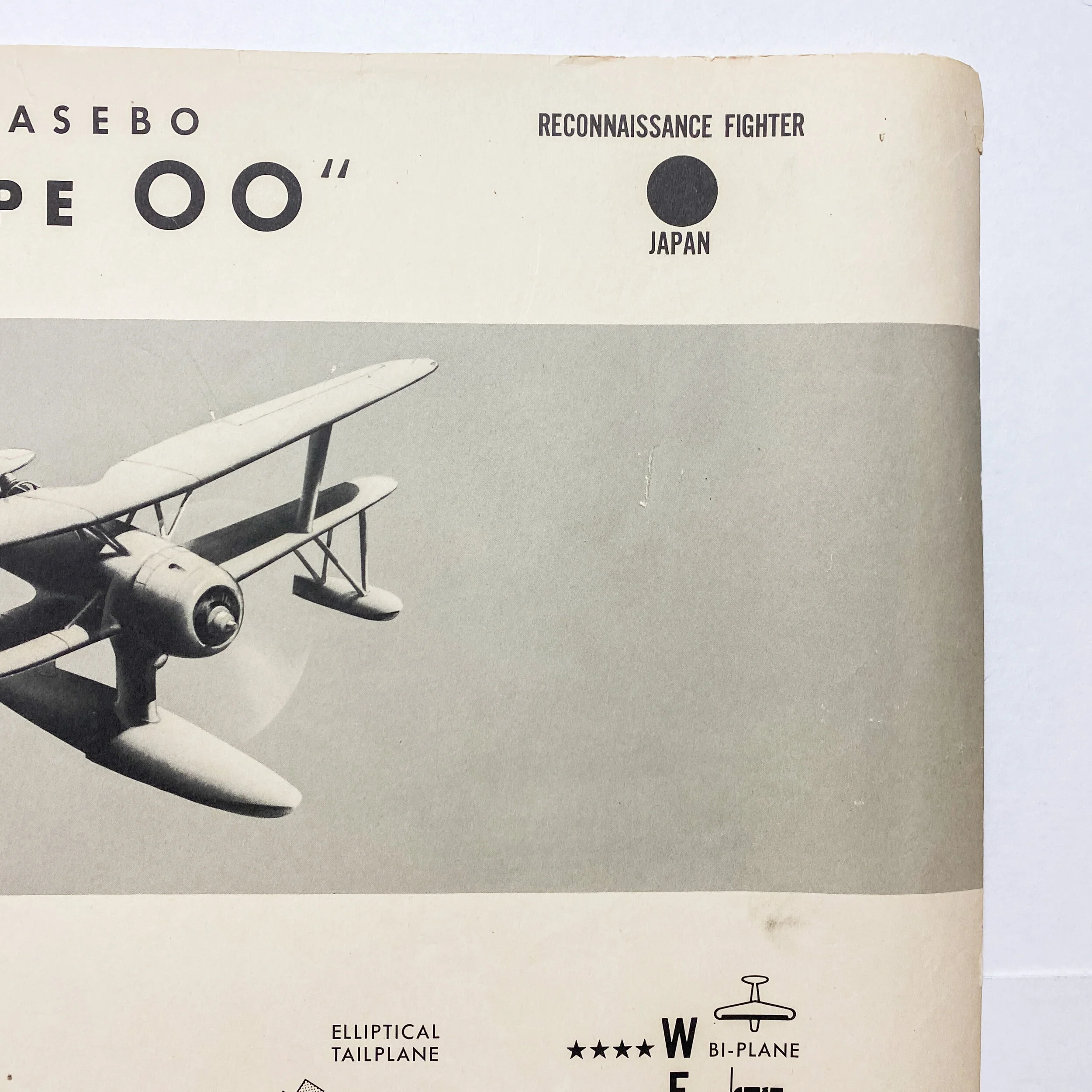Japanese Reconnaissance Fighter Sasebo Type 00 'Pete' Aviation Training W.E.F.T.U.P. ID Posters









Japanese Reconnaissance Fighter Sasebo Type 00 'Pete' Aviation Training W.E.F.T.U.P. ID Posters
Size: 19 x 25 inches
This original ‘RESTRICTED’ aircraft identification poster was published by the U.S. Naval Aviation Training Division Feb. of 1943 and was printed by the U.S. Government Printing Office 1944. This poster was posted as a training tool as well as an in theater ID poster to help U.S. and other Allied pilots, bomber crews and Naval personal to identify Allied and enemy aircraft. W.E.F.T.U.P. or Wing, Engine, Fuselage, Tail, Undercarriage, Peculiarities was a system set up for the purpose of aircraft identification and recognition.
World War II saw some of the first introduction of these aircraft ID poster to prevent friendly fire and more accurate plane recognition in combat. It was believed these posters alone could save countless lives from friendly aircraft-on-aircraft or friendly anit-aircraft fire. These posters also could cut down precious second pilots, bomber gunners, and naval gun crews would have to ID a plane flying towards them intern saving their lives by shooting first.
Each poster provides the silhouettes, dimensions, and relevant information to educate both air and ground personnel in aircraft identification. Immediate identification of aircraft, friendly or not, was essential in order for the observer (whether in the air e.g., pilot, gunner, or patrol observer, or on the ground, e.g., anti-aircraft crew) to determine his next course of action (e.g., acknowledge, attack, evade, or report). Each poster details a large clean sky and background image of the specified aircraft located as the main top imagine on the poster. It also contains important ‘peculiarities’ such as where certain gun emplacements are located, other special aircraft features, as well as wing and length measurements.
Japanese Reconnaissance Fighter Sasebo Type 00:
The Mitsubishi F1M (Allied reporting name "Pete") was a Japanese reconnaissance floatplane of World War II. It was the last biplane type of the Imperial Japanese Navy, with 944 built between 1936 and 1944. The Navy designation was "Type Zero Observation Seaplane" (零式水上観測機).
The F1M was originally built as a catapult-launched reconnaissance float plane, specializing in gunnery spotting. The "Pete" took on a number of local roles including convoy escort, bomber, anti-submarine, maritime patrol, rescue, transport, and anti-shipping strike; for example sinking Motor Torpedo Boat PT-34 on 9 April 1942. The type was also used as an area-defense fighter and engaged in aerial combat in the Aleutians, the Solomons and several other theaters. In the New Guinea front, it was often used in aerial combat with the Allied bombers and Allied fighters.